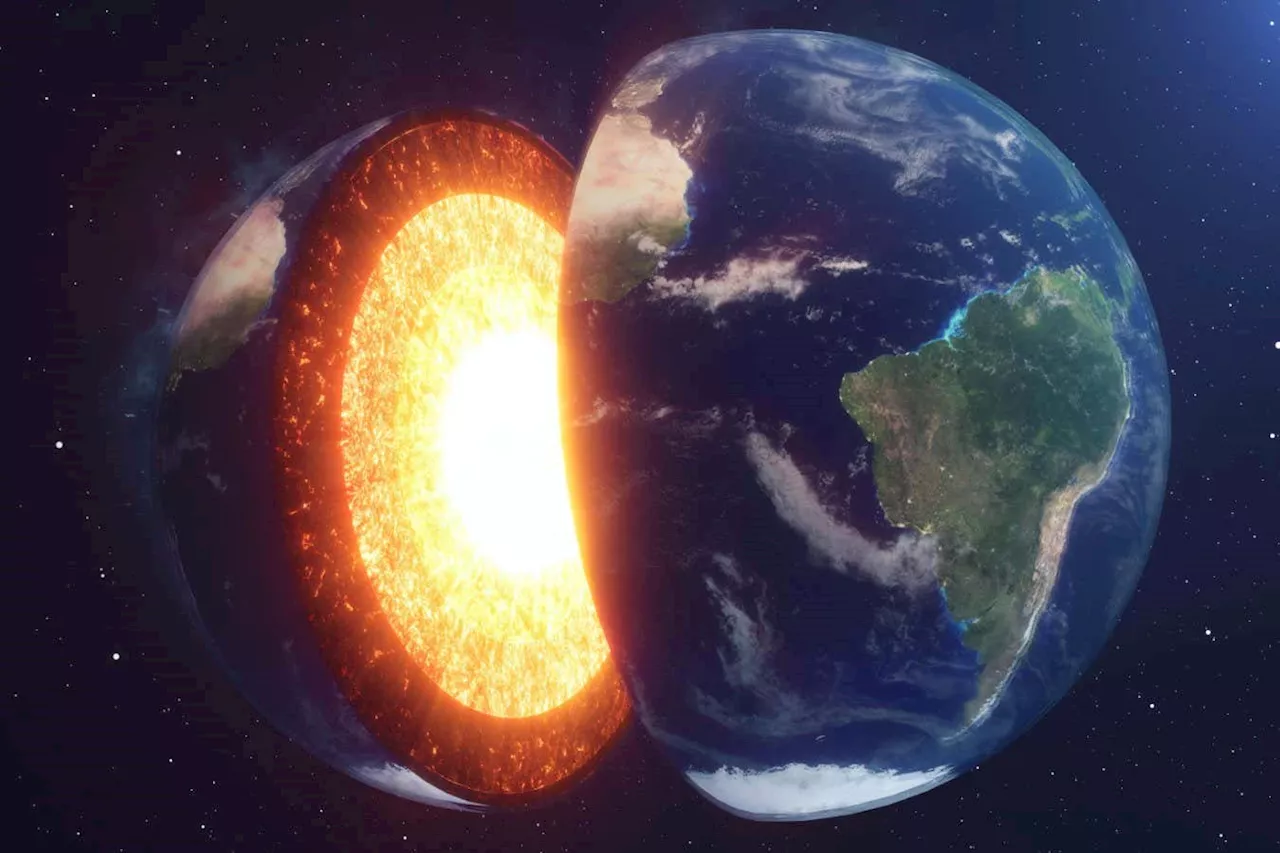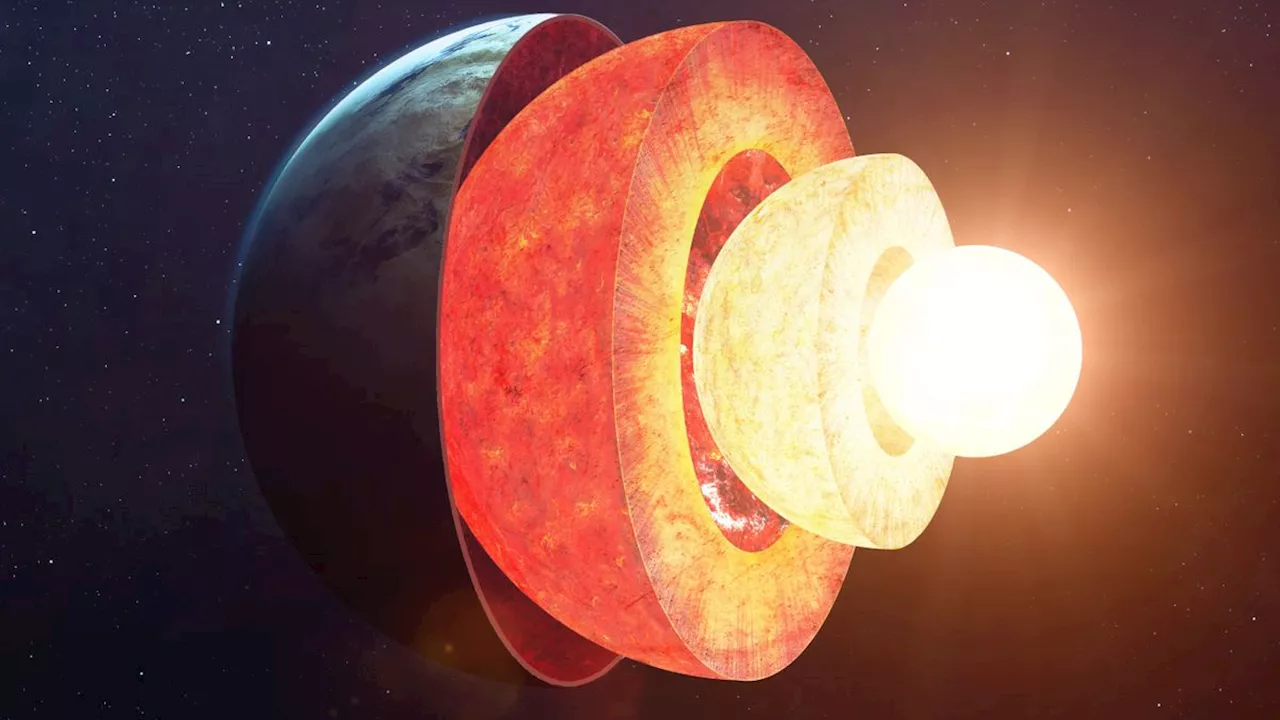New research reveals that Earth's inner core is not solid and unyielding as previously thought, but rather deforms over time. This discovery challenges long-held assumptions about the inner core and opens up new questions about its influence on our planet, including the length of our day, Earth's magnetic field, and more.
For decades, Earth's inner core was believed to be a solid, unchanging entity. However, recent research has revealed that this innermost layer of our planet is not as static as previously thought. By analyzing the patterns of seismic waves generated by earthquakes, scientists have discovered that the inner core exhibits deformation, suggesting a dynamic and evolving structure.
This finding challenges long-held assumptions about the inner core and opens up new avenues for understanding its influence on various aspects of our planet, including the length of our day, Earth's magnetic field, and more. Researchers made this groundbreaking discovery by examining seismic waves originating from the South Sandwich Islands in the South Atlantic Ocean. These waves traveled across the globe, reaching seismometers in Alaska and Canada. Notably, the waveforms, or shapes, of some seismic signals shifted between 2004 and 2008. This alteration was attributed to the waves briefly penetrating Earth's inner core, which was undergoing deformation during this period. The inner core is surrounded by an outer core, forming a boundary approximately 5,100 kilometers below Earth's surface. This boundary is a realm of mystery, and previous studies using seismic waves had revealed that the inner core is composed of solid metal rotating within a super-hot molten outer core, primarily consisting of iron and nickel. Scientists had observed that the inner core's rotation speed fluctuates over time and that it spins at a slightly different rate than the rest of the Earth. Some researchers had proposed that changes in seismic signals passing through Earth were caused by shifts in the core's rotation, while others suggested physical changes at the inner core-outer core boundary. The new findings support both explanations. Many waveform variations from earthquakes originating in the South Sandwich Islands can be attributed to core rotation, according to Vidale. However, some variations are likely caused by the inner core-outer core boundary deforming, developing bulges in certain areas. This discovery sheds light on the dynamic nature of Earth's inner regions. The inner core gradually grows over time as iron from the outer core solidifies onto it. This process drives churning in the outer core, which sustains Earth's magnetic field. Changes in the inner core's rotation can also impact the length of our day. Researchers strive to connect these observed phenomena to unravel the mysteries of Earth's deep interior
EARTH's INNER CORE DEFORMATION SEISMIC WAVES EARTH's MAGNETIC FIELD PLANETARY EVOLUTION
United States Latest News, United States Headlines
Similar News:You can also read news stories similar to this one that we have collected from other news sources.
 Forces deep underground seem to be deforming Earth's inner coreSeismic waves suggest the planet's solid inner core is being pulled out of shape – and it has undergone these changes over just a few decades
Forces deep underground seem to be deforming Earth's inner coreSeismic waves suggest the planet's solid inner core is being pulled out of shape – and it has undergone these changes over just a few decades
Read more »
 Earth's Inner Core Is Changing Shape, Scientists DiscoverFor the first time, scientists have discovered that Earth's inner core, previously thought to be a solid sphere, is actually changing shape. A new study reveals that the edges of the inner core, composed of iron and nickel, are softer than previously believed and are being deformed by the turbulent liquid outer core. This finding, published in a study led by USC Earth Sciences professor John Vidale, challenges previous understanding of the Earth's inner core and opens up new avenues for research.
Earth's Inner Core Is Changing Shape, Scientists DiscoverFor the first time, scientists have discovered that Earth's inner core, previously thought to be a solid sphere, is actually changing shape. A new study reveals that the edges of the inner core, composed of iron and nickel, are softer than previously believed and are being deformed by the turbulent liquid outer core. This finding, published in a study led by USC Earth Sciences professor John Vidale, challenges previous understanding of the Earth's inner core and opens up new avenues for research.
Read more »
 Earth's Inner Core Found to Have Deformed ShapeNew research published in the scientific journal suggests that the Earth's inner core, previously thought to be spherical, has deformed its edges by over 100 meters in height over the past two decades. Scientists analyzed seismic waves from earthquakes between 1991 and 2023, revealing changes in the core's rotation speed and shape. These shifts, occurring at the boundary between the solid inner core and the liquid outer core, may be caused by the movement of the surrounding mantle or forces from the liquid outer core.
Earth's Inner Core Found to Have Deformed ShapeNew research published in the scientific journal suggests that the Earth's inner core, previously thought to be spherical, has deformed its edges by over 100 meters in height over the past two decades. Scientists analyzed seismic waves from earthquakes between 1991 and 2023, revealing changes in the core's rotation speed and shape. These shifts, occurring at the boundary between the solid inner core and the liquid outer core, may be caused by the movement of the surrounding mantle or forces from the liquid outer core.
Read more »
 Earth's Inner Core May Be Changing ShapeNew research suggests that the Earth's inner core, a solid sphere at the center of our planet, may not be static as previously thought. It appears to change shape in addition to its known fluctuations in rotation speed.
Earth's Inner Core May Be Changing ShapeNew research suggests that the Earth's inner core, a solid sphere at the center of our planet, may not be static as previously thought. It appears to change shape in addition to its known fluctuations in rotation speed.
Read more »
 Earth's Inner Core May Be More Fluid Than Previously ThoughtA new study published in Nature Geoscience suggests that Earth's inner core, previously believed to be solid, might exhibit more fluid-like behavior. Analysis of seismic waves revealed changes in the shape of the inner core's near surface, indicating possible viscous deformation and interaction with the turbulent outer core.
Earth's Inner Core May Be More Fluid Than Previously ThoughtA new study published in Nature Geoscience suggests that Earth's inner core, previously believed to be solid, might exhibit more fluid-like behavior. Analysis of seismic waves revealed changes in the shape of the inner core's near surface, indicating possible viscous deformation and interaction with the turbulent outer core.
Read more »
 Earth's Inner Core May Be Shape-ShiftingNew research suggests that the surface of Earth's inner core may be changing shape over short periods. Scientists studied earthquake waves and found subtle differences in their patterns, indicating a dynamic outer layer of the inner core.
Earth's Inner Core May Be Shape-ShiftingNew research suggests that the surface of Earth's inner core may be changing shape over short periods. Scientists studied earthquake waves and found subtle differences in their patterns, indicating a dynamic outer layer of the inner core.
Read more »
